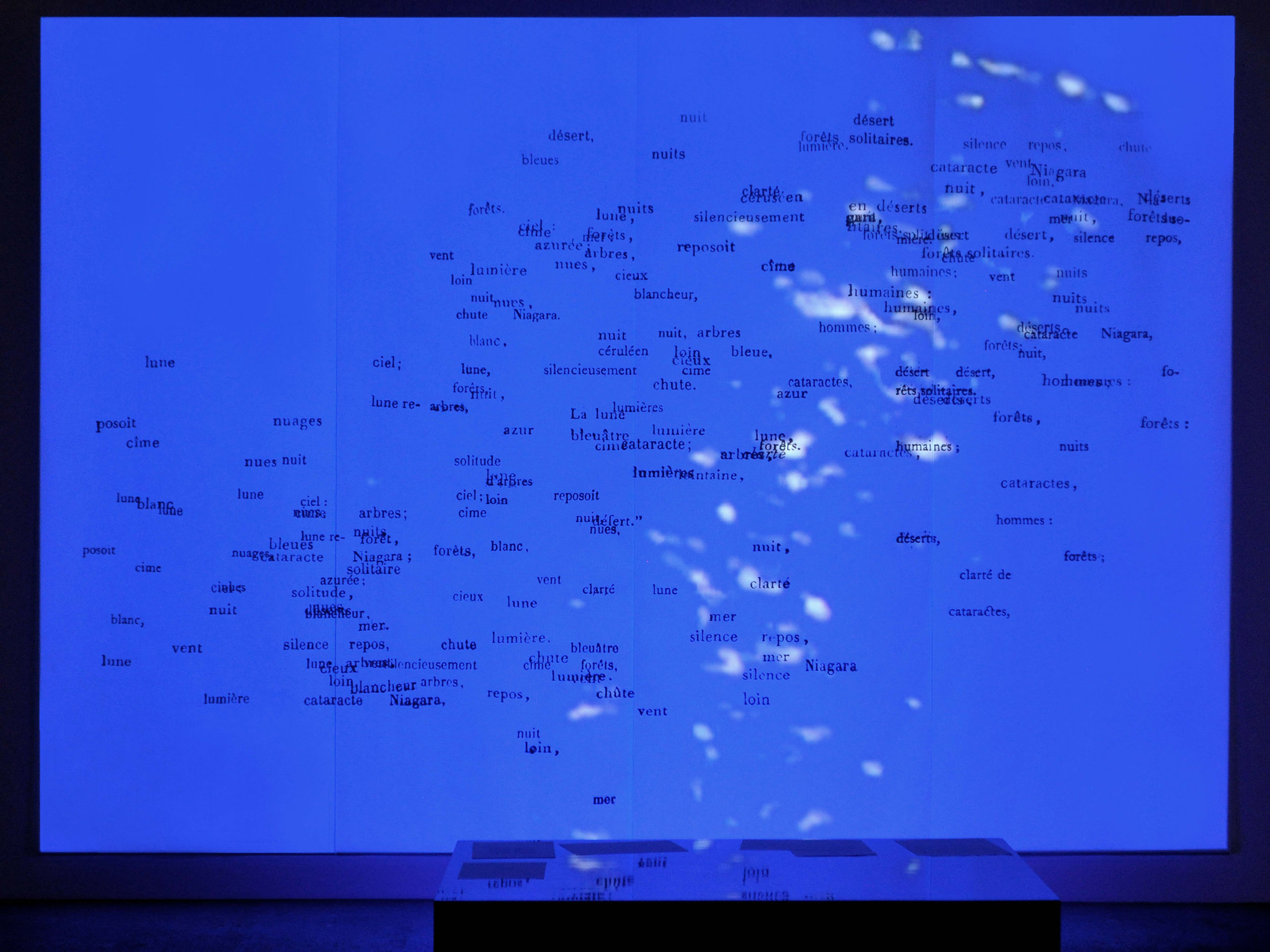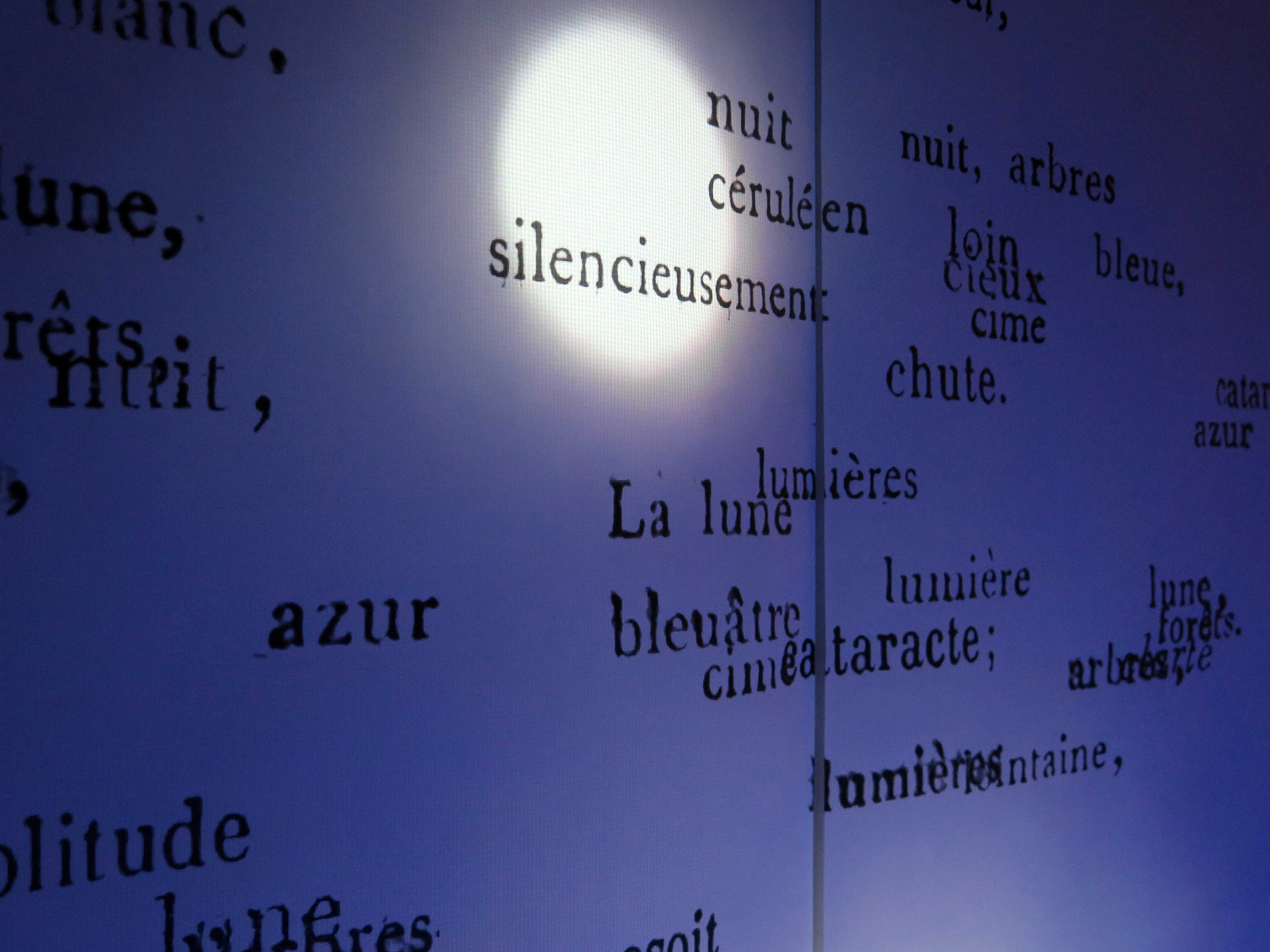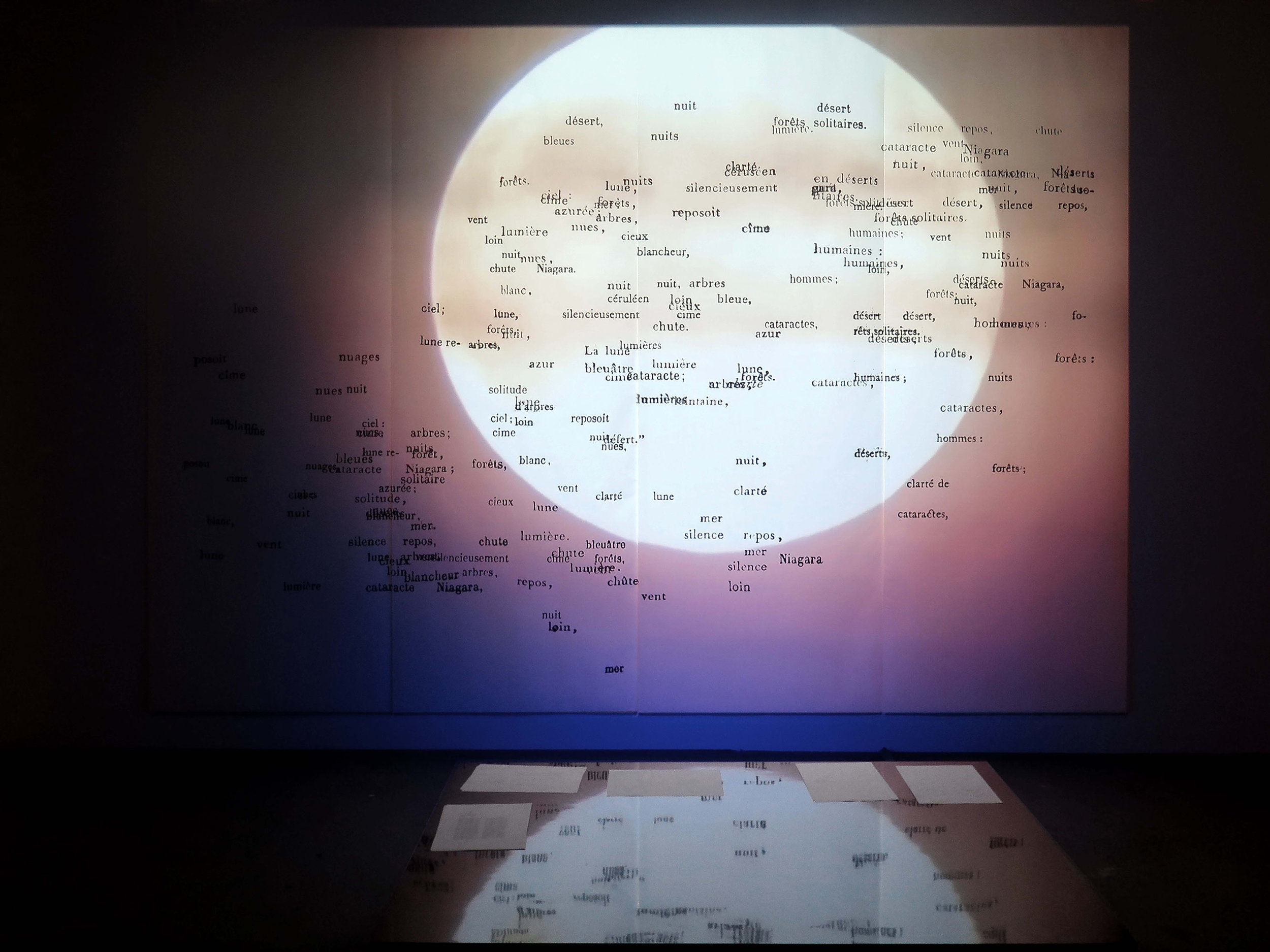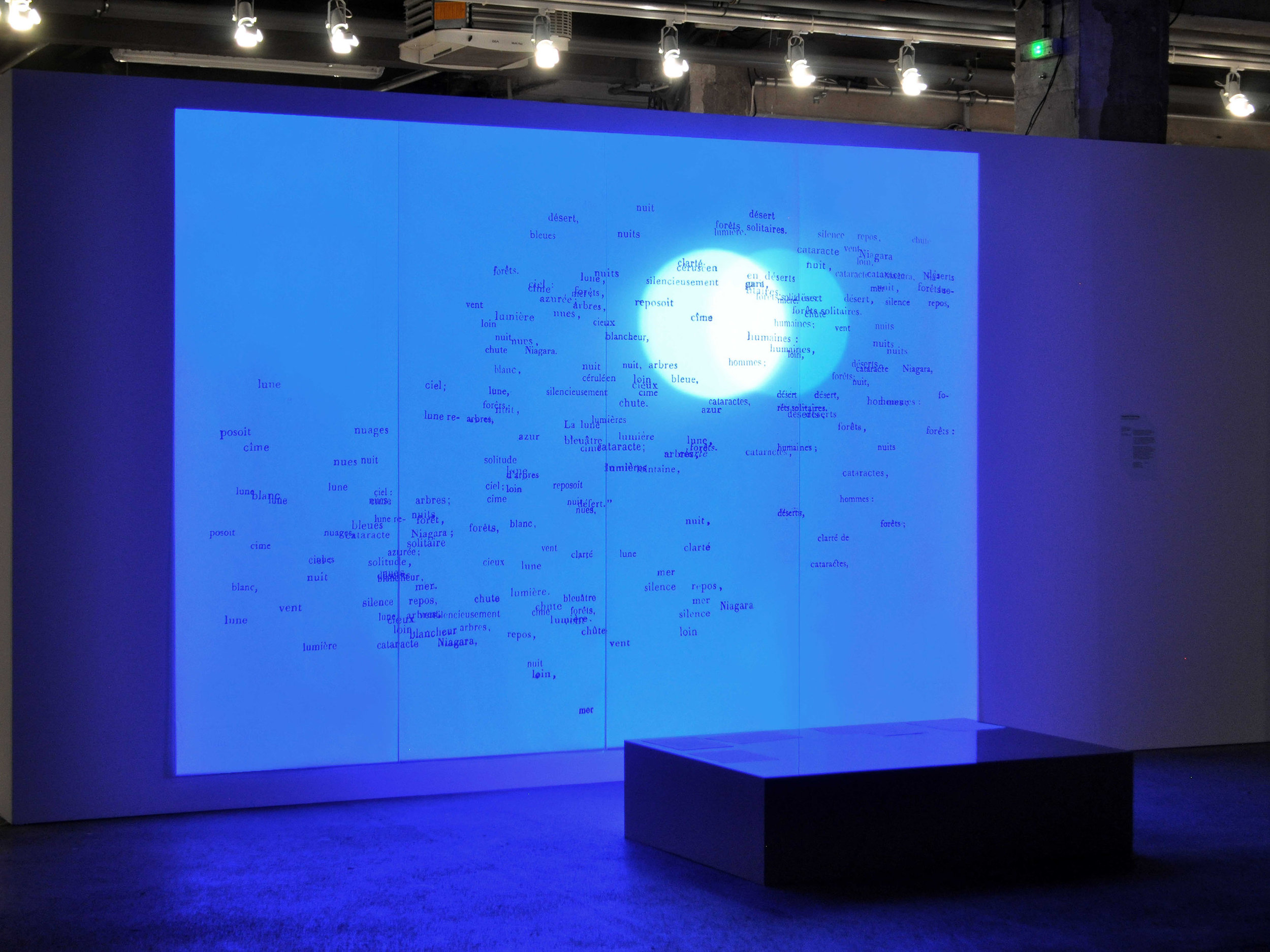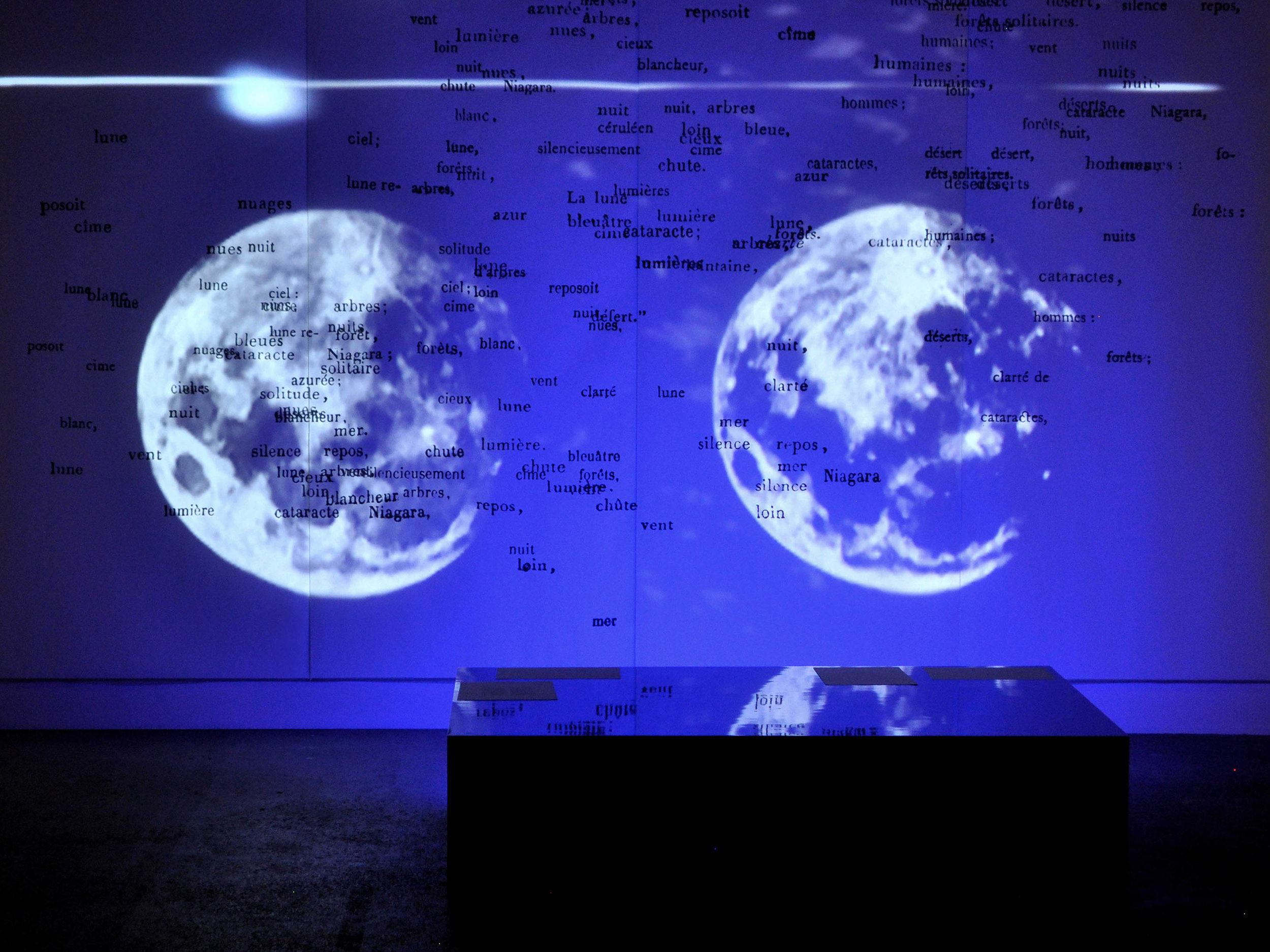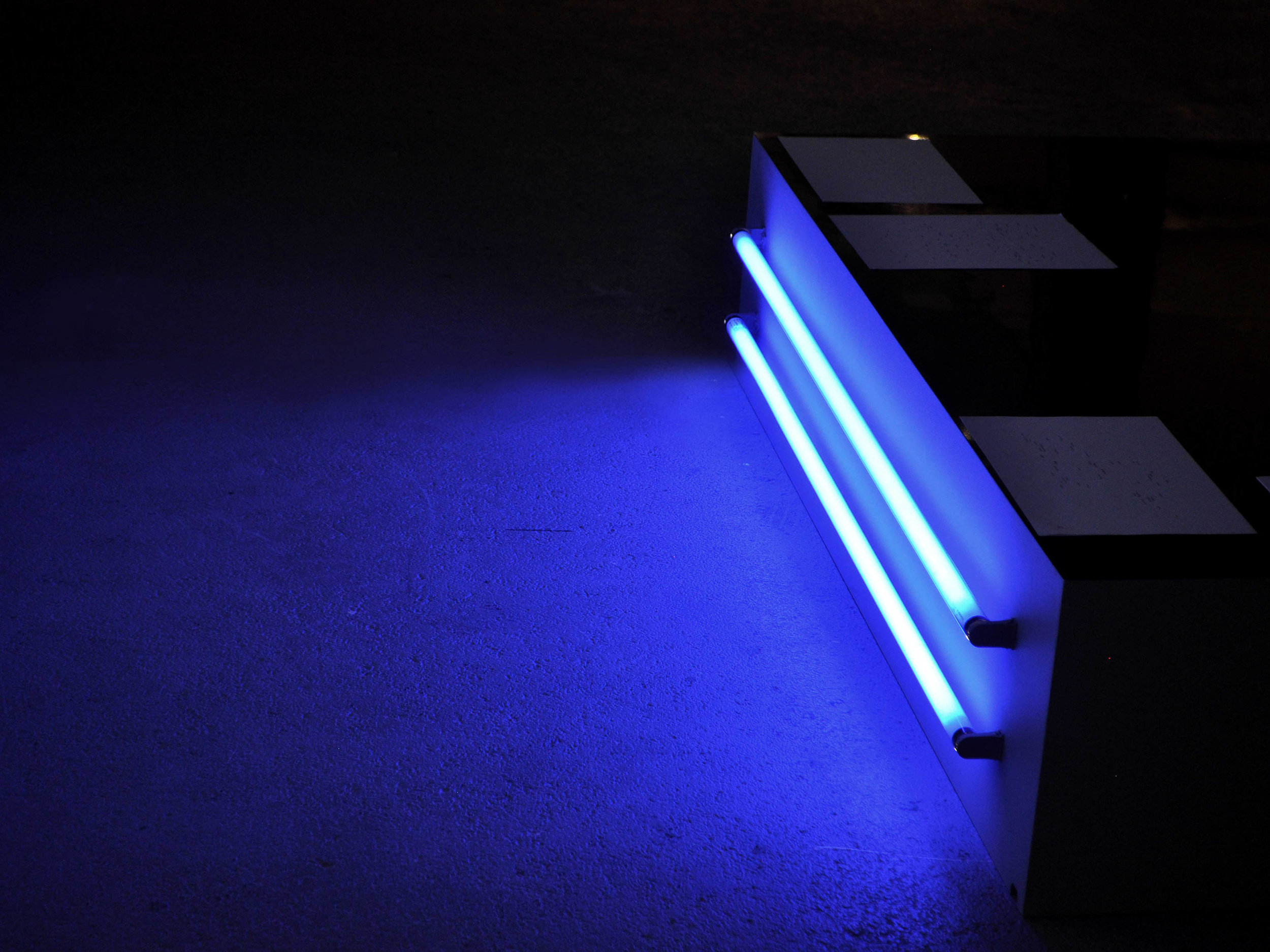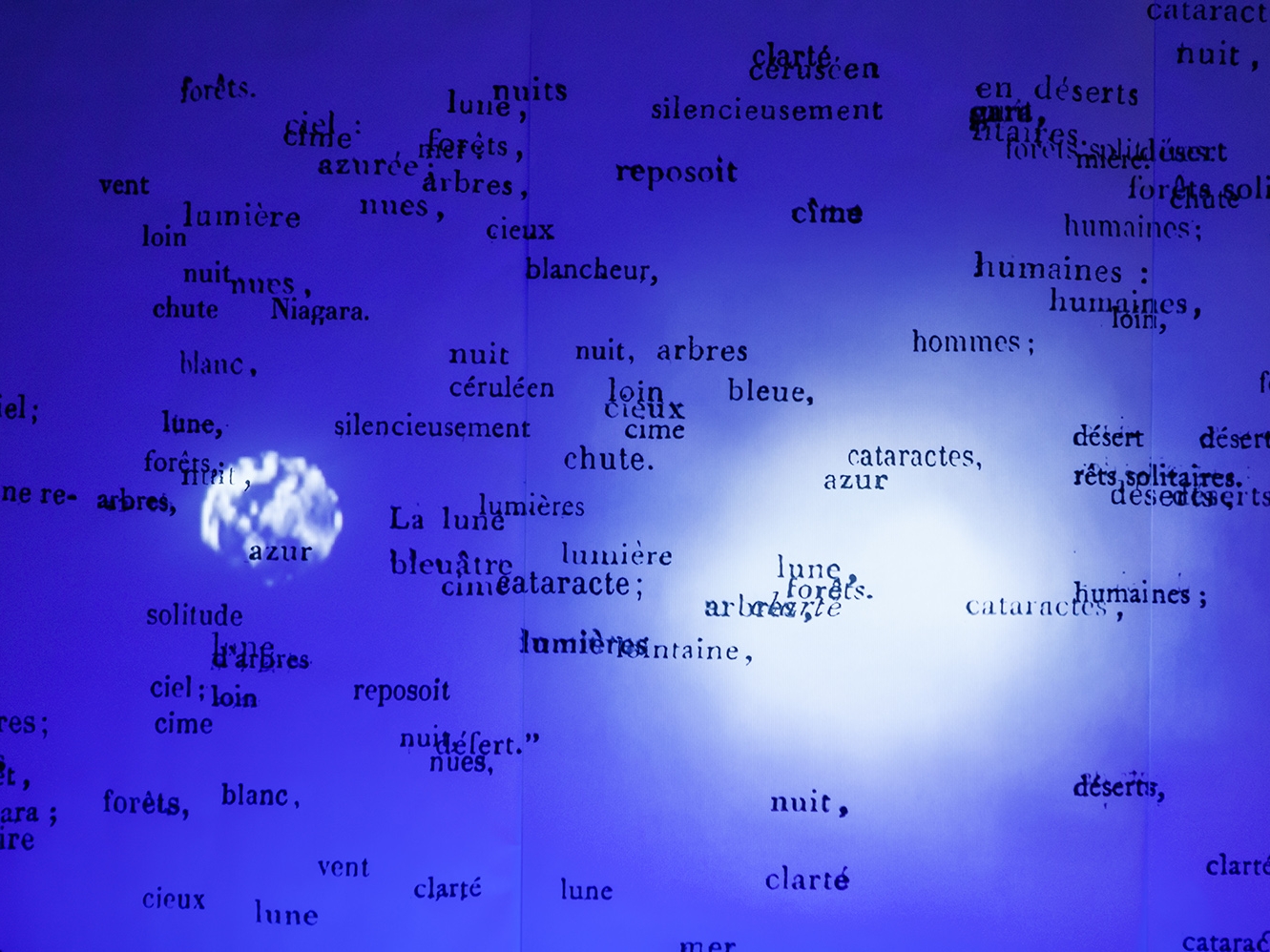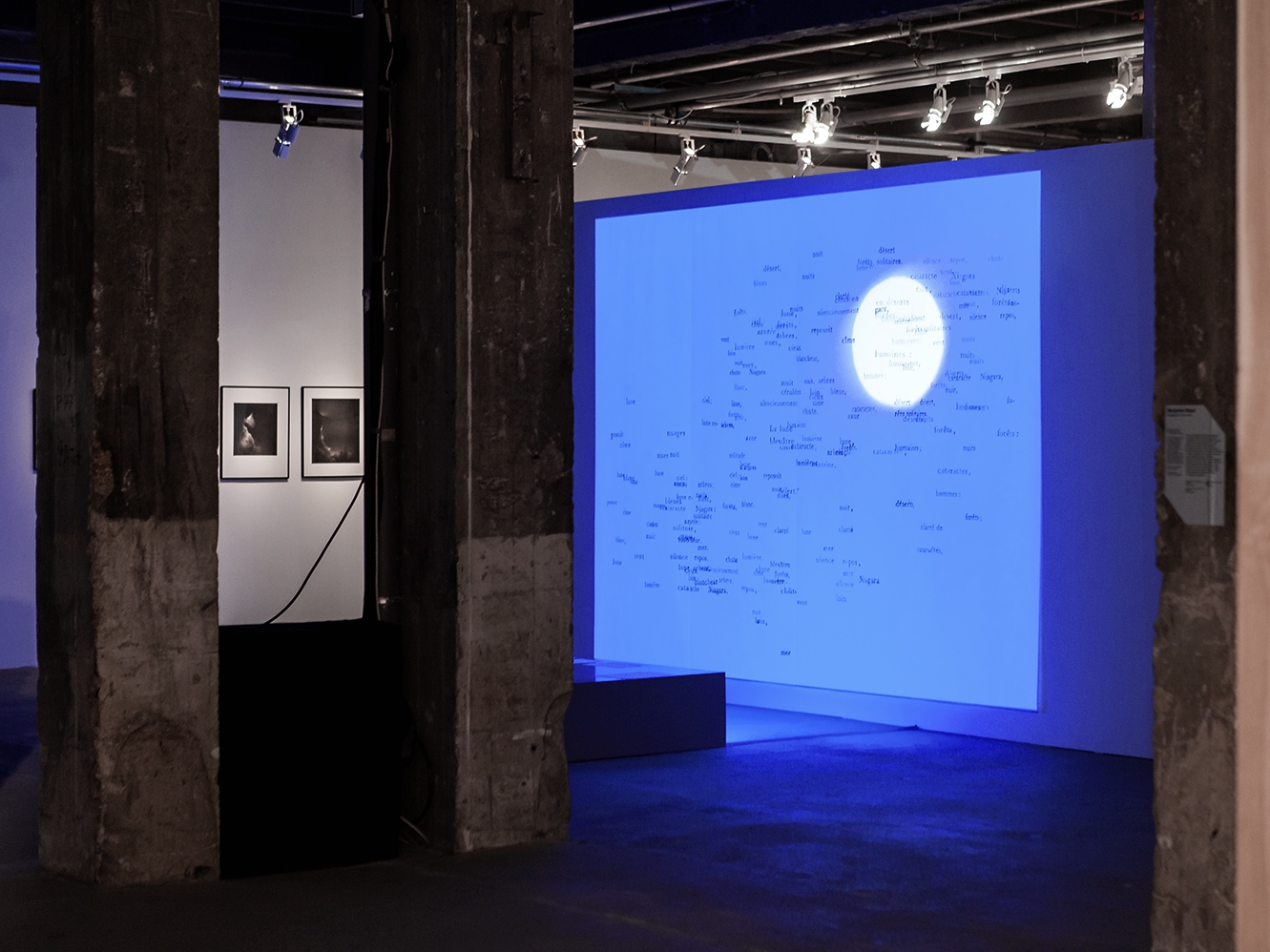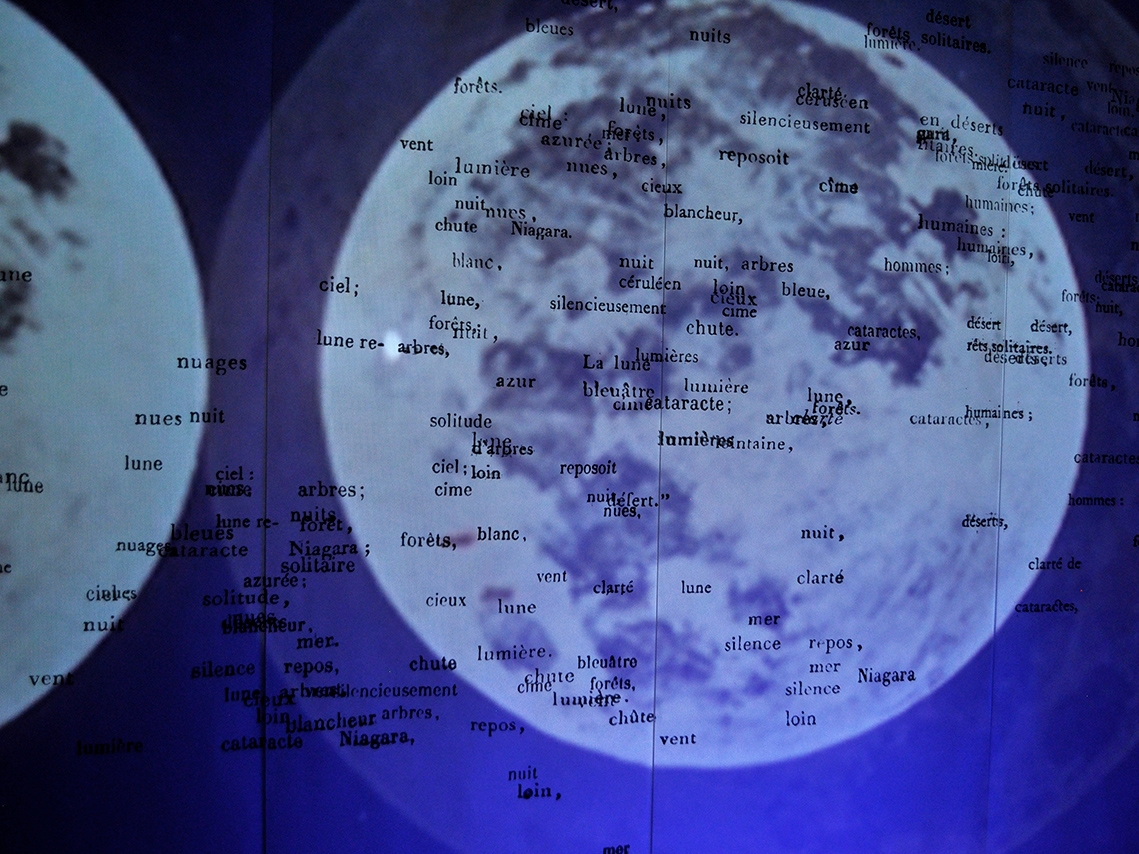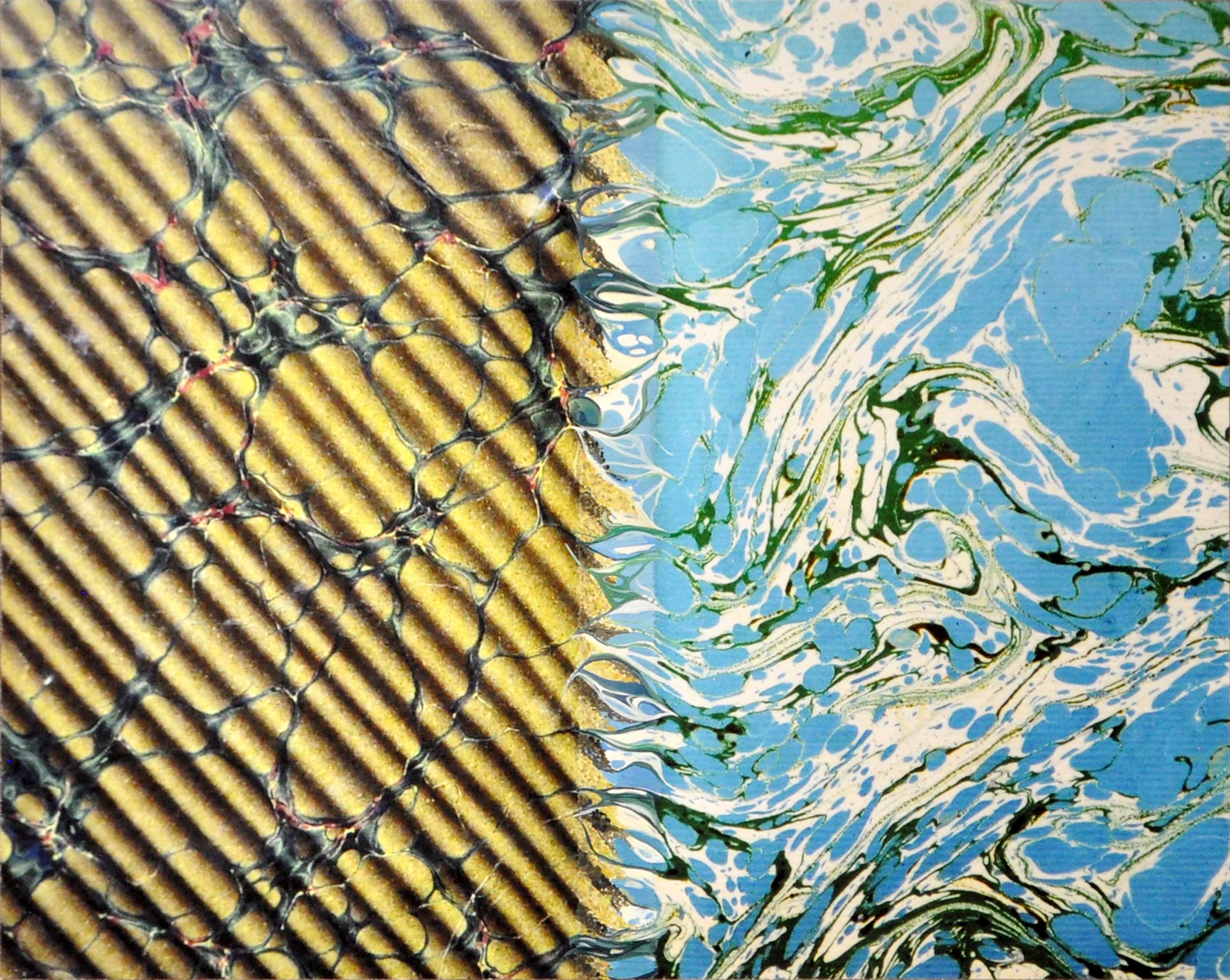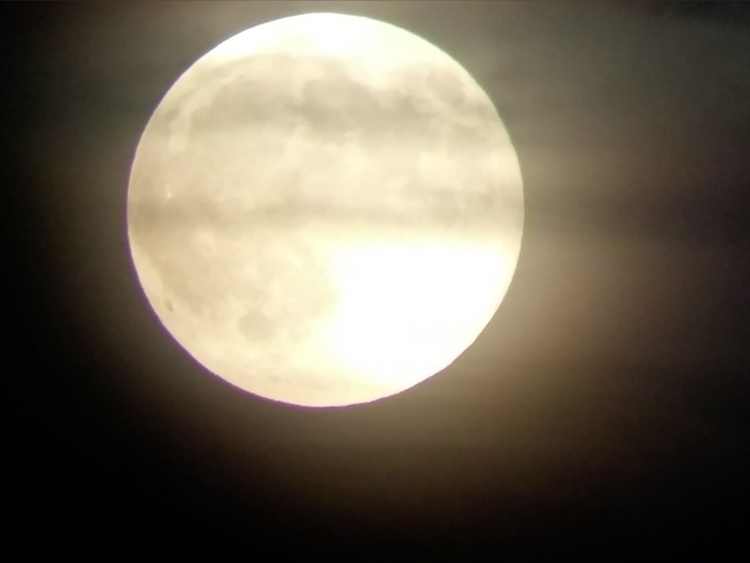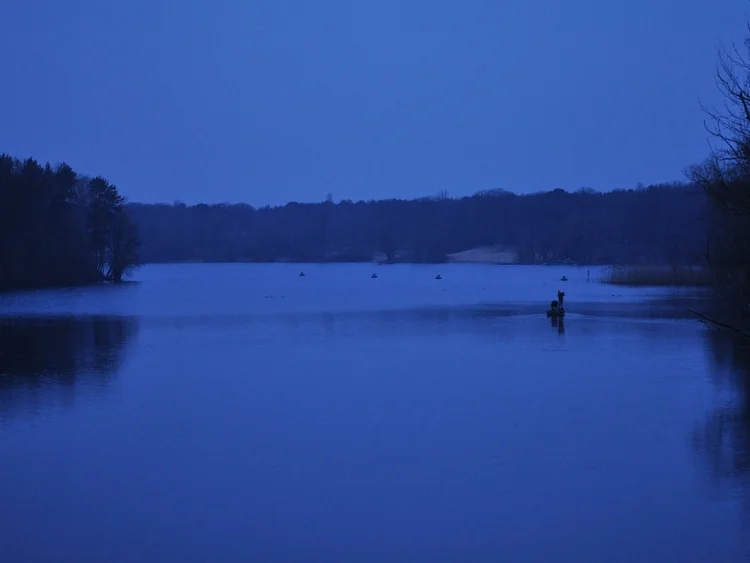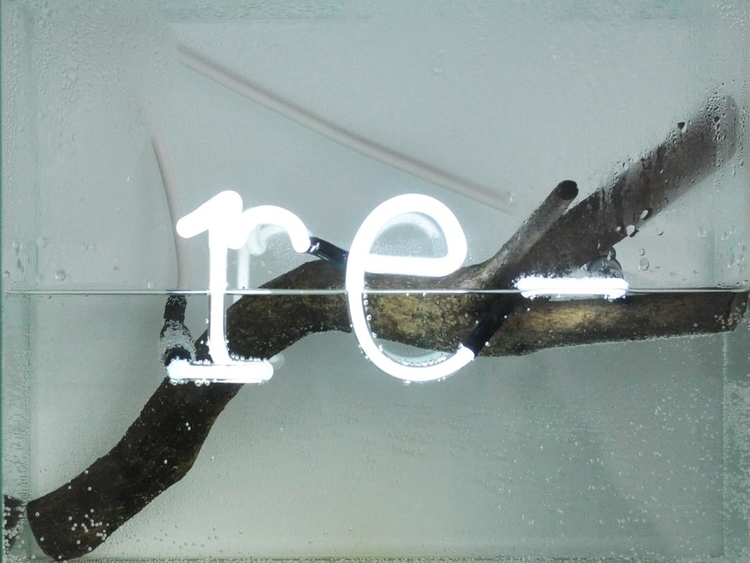Appareiller — une nouvelle génération d'artistes
Palais de Tokyo, Paris, 2017
curated by Catherine Strasser, Marc Partouche
La Nuit de Chateaubriand II (2017) Palais de Tokyo, Paris
wooden pedestal, fluorescent tubes, filters, partition of words, video, sound, loop 18min (organ Adam Bernadac)
on the pedestal: printed texts, documents
dimensions variable : partition of words: 360 x 260 cm ; pedestal: 145 x 110 x 35 cm
installation view, Palais de Tokyo, Paris, 2017
© Mathieu Faluomi
'La Nuit de Chateaubriand II' (2017) explores the process of repetition and variations used by French author Chateaubriand in his series of 'American Nights'. The installation is based on an American night experienced by Chateaubriand near the Niagara Falls when he was 23 years old. The memory of his 'night' appears repeatedly, over 60 years, in multiple books, in seven different variations.
The partition of words derives from the historical books in which were published his 'Nights'. I photographed and isolated the recurring words in each of the seven books (dated from 1797, 1801, 1802, 1809, 1827, 1848) in the author's library in Châtenay-Malabry.
The video features the full moon filmed the same night from different places around the world. The first ever taken photograph of the moon by John William Draper in 1840 is also included in the video.
The sound merges recordings of forests with a repetitive loop performed on an organ. The musical motif is gradually altered and reduced. It vanishes, covered by the white noise of the Niagara Falls.
__
La Nuit de Chateaubriand II (2017) s’appuie sur une « nuit américaine » vécue par l’auteur seul dans la forêt aux abords des chutes du Niagara et dont le souvenir habite ses écrits, se déclinant en sept variations.
Baignée dans une atmosphère bleue révélant une partition de mots, l’installation s’accompagne d’une boucle sonore interprétée à l’orgue. Lumières, mots, sons se déploient et s’effacent, jouant avec le seuil de la perception, entre distance et proximité. Les réécritures de Chateaubriand sont abordées comme une œuvre (encore) ouverte, à la portée contemporaine.
